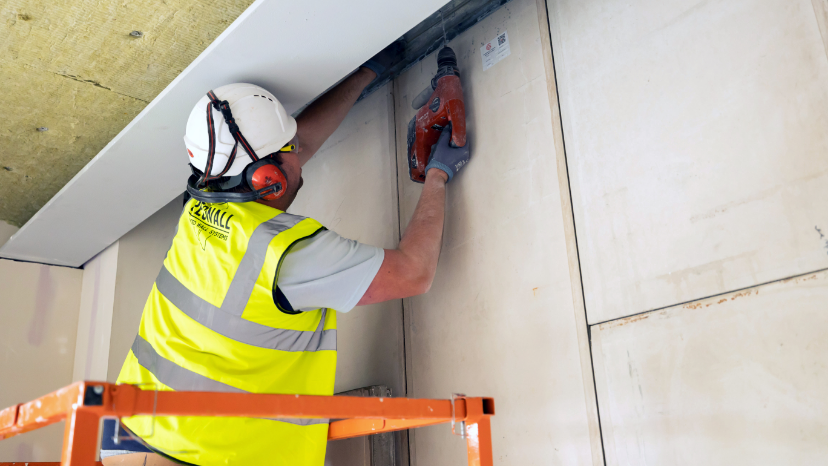Your partner in carbon reporting and certification
Carbon reporting is a key aspect of every company’s stakeholder ESG review. Accurate data combined with annual reductions will show that your business is on the right track. We can help ensure this is accurate and accredited.
See where you stand
Carbon accounting is the bedrock upon which all other net-zero work is based. It goes hand in hand with carbon accounting, and is a vital tool to inform both internal and external stakeholders of intent, action and outcomes.
Carbon accounting is critical for managing your business's environmental impact

The first step on your path to net zero
Carbon accounting is the process of tracking and measuring the amount of carbon dioxide and other greenhouse gases emitted or removed by your organization. It’s critical for understanding and managing your business’s environmental impact, enabling you to set informed reduction targets, demonstrate progress, and comply with regulations.
Carbon accounting can encompass Scope 1 & 2 emissions, and the entire 15 Scope 3 categories across your business, or be restricted to a specific boundary.
If you’re new to net-zero strategy planning, the complex terminology and plethora of guidance documents and accreditation schemes can seem daunting. When you partner with Trident, our experienced team and purpose-built Pulse software platform streamline the process into simpler steps, delivering complete visibility so you can measure your success at every stage.
Benefits of carbon reporting
Legal compliance
Carbon reporting can help your organisation stay compliant with industry or government regulations.
Cost savings
Identifying and tracking emissions will pinpoint areas for remedial action that can deliver significant energy and cost savings.
Stakeholder understanding
The insight gained will give you and your stakeholders a deeper understanding of your business performance over time.
Enhanced reputation
Having carbon-reporting measures in place demonstrates that you’re a responsible business that cares about our environment.
Competitive advantage
Reporting your emissions can give your business a competitive edge by improving brand equity and showing you’re committed to reducing inefficiency.
Climate change action
Carbon reporting is the first step in taking corporate action in the fight against climate change.
Pulse: carbon reporting software
Our purpose-built Pulse software enables you to map your emissions, get accurate reports and deliver the outcomes and transparency you need to lead.
The Pulse carbon accounting and reporting module gives you complete visibility of your business’s Scope 1, 2, and 3 emissions, empowering you to turn intent into action with a holistic strategy to reduce your carbon footprint. It integrates seamlessly with the energy management modules within our Pulse suite. There you can monitor your energy use, view up-to-date market trends and maximise the performance of your generation assets.

Energy surveys and concise audits
A thorough energy survey or audit is essential for any decarbonisation strategy or plan for lowering energy expenses. Not only do they provide insight into areas and methods for reducing consumption and carbon emissions, they can help you build resilience against climate and market-related risks, and can form the basis of a solid case for projects that require capital expenditure.
Many businesses undertake surveys in order to comply with specific government legislation, notably the Energy Savings Opportunity Scheme (ESOS). We can partner with you for the survey itself and also to implement any resulting efficiency improvements once your business has achieved ESOS compliance.
If you want to identify suitable energy-reduction projects that meet your investment criteria, we have an energy audit to suit your business, from in-depth investment grade to concise opportunity audits.

What is an EPD?
An Environmental Product Declaration, or EPD, is an independently verified document that provides transparent and comparable information about the environmental impacts of a product or service throughout its lifecycle. EPDs are based on a Life Cycle Assessment (LCA) and follow international standards such as ISO 14025 and EN 15804 for consistency and credibility.
Why are EPDs needed?
To provide transparency about product impacts to buyers or suppliers who want low-carbon goods.
To provide independent verification of manufacturer’s data
To improve efficiency in product manufacture and processes
To support green building certification including BREEAM and LEED
To highlight areas of higher environmental impact in product manufacture, which can then be addressed
Benefits of EPDs
Gain a complete picture of carbon consumption to help your business meet sustainability and/or ESG targets
Provide credibility for investors and customers
Although internationally recognised EPDs are yet to be universally adopted, certification delivers a competitive advantage for accredited businesses
EPDs last five years, giving your business documented evidence of environmental impact for a sustained period>
EPD assurance puts Specwall ahead of the curve
Trident’s assistance was invaluable as we developed our first EPD. They helped us navigate the unfamiliar and develop a complete picture of our environmental impact. Our appointed contact Chris Wilson also assisted us in the use of the EPD when issued, providing advice and guidance on how to provide valuable comparisons with other products on the market by using industry recognised partners.”
Martin Pickering - Project Director, Specwall
They helped us navigate the unfamiliar.”

See how we helped Specwall gain a competitive edge in supporting customers to meet sustainability targets.
See success storyChat with one of our net-zero energy experts
Let’s discuss how you can optimise your energy spend, cut costs, get future-ready and achieve your sustainability objectives, with our support. Fill in the query form and we’ll be right on it.
Please choose a service from the list above.